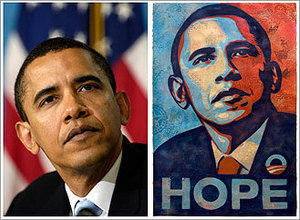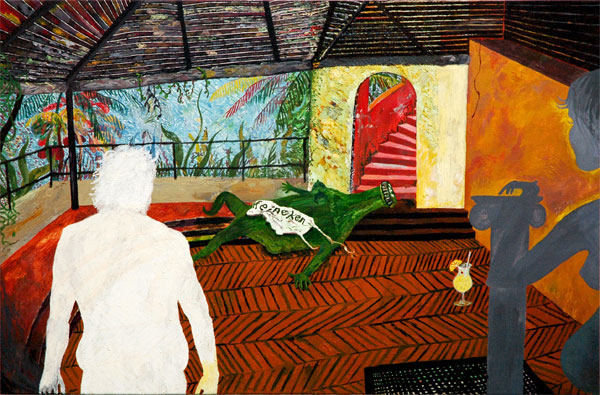This is an archive of the ArtCat Zine, 2007-2009. Please visit our new project, IDIOM.
Roundup Archive
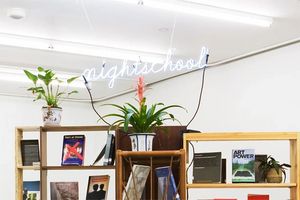
E-flux announces the last Night School session at the New Museum, this one with Berlin-based writer Jan Verwoert. In the Times, Holland Carter argues for the continued importance of university museums; ARTnews adds to a growing pile of articles arguing that the recession will help the arts; after some consternation, art and friends are back in the stimulus bill; Tyler Green is not impressed, and makes an excellent case for rethinking the emphasis placed on the NEA; elsewhere Vice released a profile of a new and completely disturbing musical subculture while New York Theater Workshop considers staging a new and controversial play (about which the Times has already made up its mind, apparently); while the ballet cuts dancers; back in the art world The New Yorker and n+1 weigh in on Shep Fairey, and art fair season looms. Finally, Ed Halter pens an interesting piece on cultural documentarian Jeff Krulik in the latest triple canopy.
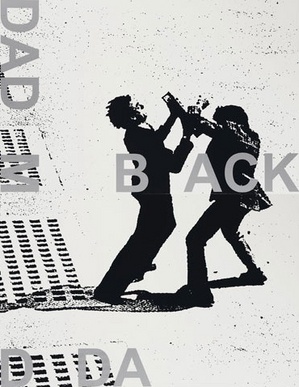
As has been hyperlinked, excerpted and commented on extensively elsewhere across the net, the New York Times' Holland Cotter has penned a bracing text on what he sees as an imminent future for art makers characterized by extensive de-commercialization and market contraction. Cotter sketches for us an inspiring historical legacy of a city that found itself, culturally speaking, at the bottom of an early 70s economic downturn. It's a time hard to conceive in the thoroughly neoliberal vision that is contemporary New York, where basic life necessities like health insurance are often contingent on full-time employment and the ever ballooning cost of live and work space makes keeping a discreet studio less and less realistic for many young writers and artists.
Similarly spirited, if more politically explicit, is Walter Benn Michaels' recent text on American literature and social inequity appearing in the pages of Bookforum this month. The ever popular memoir, Benn Michaels argues -- that most Thatcherite of literary genres -- is the marker of a society orientated towards the alienation of the individual in every respect: in success, as in failure and destitution, we are a mass of solitary actors accountable exclusively to ourselves and our own appetites. Contemporary postmodern and historicist fiction meanwhile, obscures the conditions of the present by working towards the continual re-imagining of some past or another, obsessing over the West's 20th century triumphs over fascism, totalitarianism and the Cold War. And yet nowhere is accounted the growing disparity between rich and poor, starker in this country two years ago than it has been for nearly the past century. Benn Michaels writes:
In 2006, according to the economists Thomas Piketty and Emmanuel Saez, the top tenth earned about half of all the money made in America, more even than in 1928, till then the highest figure of the century. The bottom quintile got 3.4 percent. For a great many Americans, in other words, the boom has been the problem, not the crash.
Some bad news out of Punxsutawney. E-flux has found an interesting way of printing its new journal. Meanwhile the economic climate hasn't stopped everyone from expanding their collections. Tyler Green has more on the Rose Museum situation from last week. AFC has more here. In the interim we've learned more about who was actually investing with Madoff. From First Monday, an interesting study on wikipedia pages, and how they are constructed over time. Edward Winkleman has compiled all of his previous advice for artists seeking gallery representation. NPR has the scoop and how much additional funding for the arts is included in the stimulus package being debated in the senate at present. Carol Becker talks with the Brooklyn Rail here, and Shepard Fairey has recently drawn criticism for his unattributed use of AP photographs.
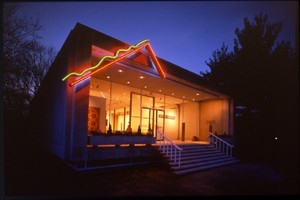
So you might have heard, but Brandeis is closing its Rose Museum, because they are broke. How broke? Broker than was thought, apparently. The reaction has been widespread and swift. ("Philistine in the extreme" wins the epithet-award in connection with all of this.) Tyler Green has good coverage here, here and here. Caroline Stanley points out that if this sudden lack of funds tracks back to Bernie Madoff, as it likely does, Brandeis is to be hurt double as its usual donor base was probably hit just as hard by the same Ponzi. Also something to do with a 'prissy fatwa,' apparently a highly complex legal term. Felix Salmon has more on the numbers here, thanks to AFC for the link. Petition is here, for those of you so inclined. There is a general feeling, it seems, that the Rose is the first domino to fall in what is likely to be a long chain of closings, unless things turn around quickly. Those working in the arts and non-profits more generally often report a one year lag behind the general economy, for good and ill, and we are approaching a very special anniversary.
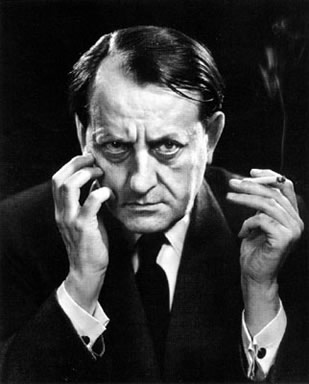
So it began with this, a request for a Cabinet level cultural post of our very own. Quincy Jones, for his part, has apparently been on this tip for a while. And you might have seen this, a not particularly elegant, but supportive, petition floating round the ethernets all week. A look at the history of Big Brother's artistic subsidy action can be found here, where the author argues, not without cogency, to improve the institutions in place rather than creating new ones. From 2007, a brief rundown of the typical duties of cultural ministers also includes a cool picture of Andre Malraux, the OG culture minister, who served under De Gaulle. Obama's pre-election arts platform can be found here, and some celebrity's gush over his general affection for the arts on the mayor's website. A more recent report seems to indicate that, like everything else good in the world, arts and any new Tsars will have to be curtailed due to the economy. This short and somewhat scattershot post indicates the existence of confused scientists who were hoping the new cultural Tsar would protect them from activist school boards. NPR weighs in here.
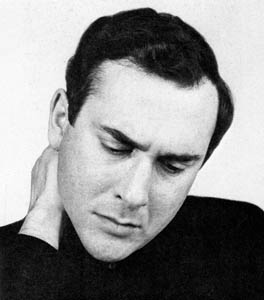
Artfagcity celebrates an altogether worthy and encouraging fundraising success with a wickedly satisfying worst-of the-web 2008. Elsewhere, Saint Slavoj takes a break from his ongoing experiment in theoretical collage to respond to some particularly ridiculous slander from The New Republic, which is drifting farther and farther to the right. When you're linking to this, maybe its time to just come clean and stop wasting everybody's time, eh Franklin? S'all right, their circulation might just be the only thing sinking faster than the stock market. Meanwhile, across the pond, some fictional artists got together and offended everybody, for old time's sake. Daniel Birnbaum continues to meet with widespread professional frustration, venturing this year at directing some minor art fair and interviewing some marginal philosopher; "Everything shall be incorporated into the great digestive system—nothing is inedible in Hegel's infinite metabolism." Triple Canopy may have pioneered the first truly satisfying web/magazine hybrid, and continue to use it to good effect, as evidenced by this. On a more somber note, Martin Puchner pens an excellent piece on the passing of Harold Pinter; "He was a Beckett for actors." Indeed he was. Pause.
As an alternative supplement to the dozens of openings this week in commercial galleries around the city, the twice a year opportunity to visit two important MFA programs happens tonight — at Hunter College tonight (6-10pm Friday 16 November W. 41 street, 450, b/w 9 & 10 avenue) and Columbia University on Saturday (2-430pm 17 November 632 W 125th st, 4-6pm at 612 W 115th st, 6-8pm at 310 Dodge Hall on 2960 Broadway at W. 116th).
The International Studio and Curatorial Program of New York opens its doors as well this weekend, giving art spectators a chance to visit the studios of some 31 international artists working across media and currently completing their residencies at the ISCP. (Opening Recetion 7-9pm Friday 16 November, 12-6pm Saturday 17 November, 12-6pm Sunday 18 November, 2-8pm Monday 19 November at the ISCP, 323 WEST 39th ST, 6th, 7th, and 8th floors)
This weekend offers a chance to see Tony Conrad's The Flicker (1966), one of the foundational works of American structural film. Other 70s works by Conrad will be presented, including Straight and Narrow (1970), a black and white film with hallucinatory color inducing effects, and Film Feedback, an experiment in real-time film processing and re-photography. The three works comprise a suite of historic minimal, and quite challenging, American avant-garde cinema. (6pm Sunday 18 November 32 2nd Ave at E. 2nd St., $8).
Performance artist Karen Finley gives a tour of Nation Building, her new show of drawings, installation, and video works currently on view at Alexander Gray Associates in Chelsea this Saturday. Finley's show, among other things, explores an interesting set of imagined Freudian underpinning to the subconcious lives of the executive policy makers. (4pm Saturday 17 November, 526 W 26 St #1019)
Tom Moody starts a rowdy discussion about Diana Kingsley's recently removed photograph, Blue Ribbon, 2005 at 55 5th Avenue in NYC (at 13th Street). The photograph pictures the torso of a sweatered large breasted woman opposite a winning floral arrangement and was taken down due to a complaint that the work was insensitive to those visiting a neighboring mammogramy office. Moody takes the position that the complaint stifles expression where as the guardian's Ana Finel Honigman believes the work was inappropriately placed. I suppose those who are facing the possibility of losing their breasts might not want to see a picture of someone who presumably will be keeping theirs for some time, but it's hard to imagine a more tame photograph than this. I want to be sensitive, but these are the kinds of complaints that lead to the exclusive display of tepid landscape painting. Also see artinfo for a brief summation of the story.
This weeks Impressionist and Modern auction sales started out tame at Christies, who faired reasonably given a slumping economy, and led to a rather disasterous evening at Sothebys. That auction totaled 269.7 million, falling significantly below their presale low estimate of 355.6 million. Apparently the most disappointing moment of the auction came early on, when The Fields, a Van Gogh painting estimated to sell for as much as 35 million, drew not a single bidder. Sotheby's stock responded yesterday by plummeting 14.23 percent. Culturegrrl writes up a storm on this subject here, here, and here.
Tyler Green writes that while Dave Hickey is probably the most admired art writer of the moment, Laurence Weschler could stand to see a little more attention. I couldn't agree more. His book, Seeing is Forgetting, a biography of Robert Irwin is a must read for any artist. I might also advise artists to read Hickey with a few more grains of salt than many do. There are far too many hipster artists overly concerned with beauty and the whims of pop culture, all of whom have read Air Guitar and treat it as though it were the bible.
Paul Schmelzer interviews communications scholar Bob McChesney about the FCC ownership vote and net neutrality. If there was any question that the FCC has been acting rather shadily, McChesney clears this up in the except below,
Kevin Martin has reopened a review of its media ownership rules, as it’s required to by law. And he agreed, and the FCC agreed after the last time the rules were thrown out in the court system that to make sure it’ll past legal must this time they would hold at least six public hearings on what people think of these rule changes. The last one is coming on November 9 in Seattle. Chairman Martin of the FCC is making it clear that he is determined to change the rules – he’s been public about this – as quickly as possible, as dramatically as possible, and really has no concern whatsoever with following the spirit of the process where the public hearings hold any value. He’s given in almost every case minimum possible notice to the community that’d they’d be having hearings. The last two, literally a week's notice. And these are supposed to be hearings to solicit public opinion from across the board. They’ve tried to put them during daylight hours when working people can’t get away from work. And he’s made a mockery of the process.
To read the full interview click here.
Although I haven't yet seen the show at CANADA gallery quite a few of my friends have been talking about, I did stumble upon James Wagner's fantastic documentation of a few of the new Michael Williams paintings hanging there, as well as some of his own thoughtful words on the show. I do plan on going to see the work in person, and based on hearsay and a few jpegs, would recommend it to anyone in the geographic proximity. James does a great job in his photos communicating the artist's expressive and involved use of color, his considered manipulation of perspective, and some of the neo-surrealist figures and content of the paintings.
In the context of having just read most of October's Art of Production survey in Artforum, and Phillip Tinari's lengthy piece on the Dafen Oil Painting Village in the Guangdong province of southern China, I came upon the following link on popular artblog vvork documenting a conceptual project by an anonymous Dutch artist. Just Another Painting is a blog that presents the purportedly real correspondence of an artist attempting to coordinate the remote overseas fabrication of a painting exclusively via electronic communication. The words and images exchanged are spare, and in effect demystify the art-making process. The painting being fabricated itself is constructed via a seemingly half-baked process of collage: the artist selects charged images and pieces them together haphazardly, his vision clearly inspired by fantasy art and an absurdist Internet montage aesthetic.
In Performa related announcements this weekend, Isreali performance and video provocateur Tamy Ben-Tor performs uptown at Salon94 on 3 November through 6 November, each time at 6pm. Email info at salon94 dot com to RSVP for the free performance. Writing of her own work, Tamy Ben-Tor is quoted on Performa's website as stating "it is not a specific individual which I portray, it is a mimicking of public opinion, of cultural phenomena." She has created work in the past exploring various facets of contemporary Jewish and Western political and cultural paradigms, and has put her formal training as an actor to excellent use with her convincing and arresting presence.
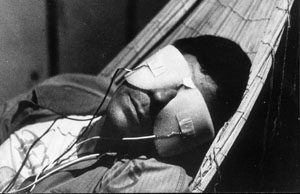
Documentary photographer and filmmaker Danny Lyon presents a reading from his latest book Like a Thief's Dream at the Whitney, Friday 12 October. The artist has been known for his "New Journalism" photographic practice as well as his montages and occasional films — the best known of which center on renegade bikers and prison inmates.
In conjunction with Staring Back, Chris Marker’s current photo show on view at the gallery, Peter Blum in SoHo will be screening several films by the artist. Tonight at 7pm The Sixth Face of the Pentagon (1968), The Embassy (1973), and À Bientôt J'Espère (1967) will be shown. All three films, the second a fiction and the other two documentaries, are about the uncertainties and potentials of social political struggle. On Thursday, 18 October, the gallery will screen the Marker’s highly formative sci-fi dystopia La Jetée (1963) and Remembrance of Things to Come (2002), Marker’s more recent documentary effort — both films are almost completely composed of still images.
Next Wednesday, 17 October, the Guggenheim will host "Reagen-Era America", one of several panel discussions presented this month along with “Richard Prince: Spiritual America.” The panel's titular topic will discuss the political and cultural climate of the late 70s and early 80s, and will be moderated by Johanna Burton; participating commentators will be critics Todd Gitlin, Isabelle Graw, Julia Bryan-Wilson, and Gil Troy.
ZINE
HOME
TIPS / COMMENTS
CATEGORIES
CONTRIBUTORS
- Greg Afinogenov
- B. Blagojevic
- Adda Birnir
- Susannah Edelbaum
- Julie Fishkin
- Paddy Johnson
- Jessica Loudis
- Christopher Reiger
- Andrew Robinson
- Peter J. Russo
- Blythe Sheldon
- S.C.Squibb
- Hrag Vartanian

